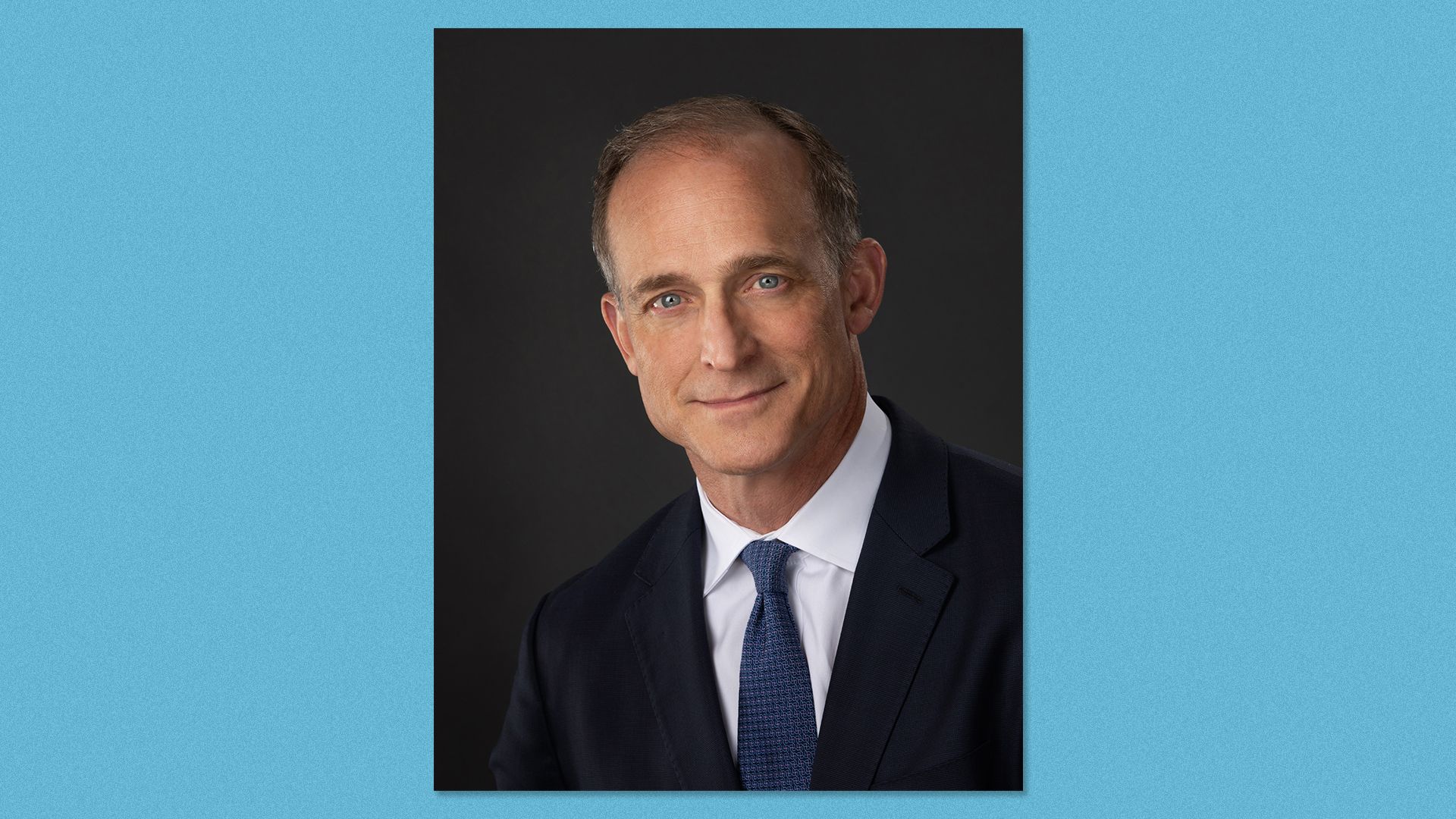| | | | | | | Presented By Northern Trust | | | | Axios Markets | | By Kate Marino ·Sep 03, 2021 | | ☀️ Good morning. In honor of Labor Day weekend, we've got some jobs-related content in today's newsletter. Markets will be back in your inboxes on Tuesday. 🚨 Situational awareness: More jobs stuff! The August employment report comes out today at 8:30am ET. 🍿What I'm watching: What's an '80s marathon without a John Hughes film about the difficulties of teen life? Disappointingly, in "Some Kind of Wonderful," the characters aren't really that likable — so I give it a 🤷♀️. Today's newsletter is 1,317 words, 5 minutes. | | | | | | 1 big thing: Algorithms have arrived in the bond market |  | | | Illustration: Sarah Grillo/Axios | | | | The corporate bond market has always lagged equities — by a lot — in electronic trading. But recent innovations in pricing algorithms have helped grease the wheels for a relatively new way of moving a basket of bonds. What's happening: That process, called portfolio trading, started picking up steam in 2019 — and is similar in concept to program trading for equities. - The pandemic-era push to experiment with workflow has helped accelerate portfolio trading activity, which has grown to a 5% share of total corporate bond trades, up from just 2% in January, according to Tradeweb.
Why it matters: Liquidity has always been a pain point in the bond market. Portfolio trading helps address that by allowing asset managers to move large baskets of investment-grade or high-yield bonds in a single trade in a matter of hours. - Moving the same basket the old-fashioned way might take days — and loads of phone calls — leading to more information leakage about the trade and sending prices south.
- Portfolio trading also helps investors sell illiquid bonds that they may otherwise not be able to find a bid for. Put one of those bonds into a portfolio of otherwise fairly common names and it'll usually sail through in the basket trade, sources tell Axios.
Where it stands: Asset managers drove the initial portfolio trading activity, but that's expanded to insurance companies and even hedge funds, says Chris Bruner, head of U.S. institutional fixed income at Tradeweb. - Overall activity is expected to continue growing, he adds.
How it works: A trading desk runs an algorithm that spits out a clearing price for a basket of dozens or even hundreds of individual bonds. These portfolios can be anywhere from $100 million to over $1 billion in size, says Bob Summers, portfolio manager and senior trader at Neuberger Berman. - Why this process didn't develop earlier has to do with the sheer size and variety of the bond market. There are 100,000 individual corporate bonds compared to less than 5,000 public equities in the U.S.
State of play: Fund managers use the portfolio trading technique to quickly put large inflows to work — or to create the liquidity to fund large withdrawals. - "If we get $100 million in from a client, this is a very easy way to get that $100 million invested right away," says Summers.
Piggy-backing off of exchange-traded funds helps. Because ETFs are buying and selling assets every day, the more a portfolio trade lines up with an ETF's assets, the easier it is for trading desks to move the inventory, Bruner says. The bottom line: Portfolio trading is a still small portion of the overall market — but the train has left the station. |     | | | | | | 2. Catch up quick | | Officials at Renaissance Technologies, the hedge fund, settled a dispute with the IRS in which they'll pay as much as $7 billion in back taxes — in what may be the largest tax settlement in history. (WSJ) Texas' largest corporations are being very quiet about the state's new abortion law. (FT) Wire-transfer providers MoneyGram and Western Union will resume services to Afghanistan. (Axios) Exxon Mobil is tapping the U.S. Strategic Petroleum Reserve, the first use of the SPR in four years, after Hurricane Ida left much of Louisiana's refining and oil production offline. (Bloomberg) |     | | | | | | 3. Latin America is worried about inflation |  | | | Illustration: Sarah Grillo/Axios | | | | Chile's central bank became the latest in Latin America to hike interest rates this week, startling markets with a decision to double its overnight rate. Why it matters: Inflation has been running high in parts of Latin America. And central bankers across the region don't have the luxury of maintaining a "looser for longer" monetary policy the way the Fed and the ECB do. - That's because many Latin American countries have a more traumatic past when it comes to runaway inflation — so they're often quick to act on rising prices, Alonso Cervera, chief economist for Latin America at Credit Suisse, tells Axios.
What's happening: Chile's central bank hiked its key rate to 1.5%, from 0.75% — and said it expects to keep on hiking all the way to 3.5% within the next six months. - This, after saying in June that rates would likely end the year at 1.25%.
- Chile's move was driven by expectations for inflation of 5.7% this year, and a forecast that 2021 GDP growth will heat up by as much as 11.5%.
The big picture: Mexico, Brazil and Peru have all raised rates in the last few months. And Colombia's central bankers have also hinted that they may need to begin a tightening policy. - Many of the recent rate-hikers don't have nearly the growth expectations of Chile — but are experiencing inflation, Cervera says.
What to watch: Besides the next round of inflation data and central bank meetings — upcoming elections. - That's because even as central banks seek to pull back from pandemic-era support, social spending demands on the part of the public may intensify — because COVID's impact on jobs and poverty has lingered, Michael Arno, associate portfolio manager at Brandywine Global, tells Axios.
- The Chilean general election will take place in November, followed by Colombia in May and Brazil in October 2022, he notes.
|     | | | | | | A message from Northern Trust | | Market Currents podcast: Listen now | | |  | | | | Market Currents, a new podcast from The Northern Trust Institute, explores today's most hotly debated investment topics. Join host Katie Nixon as she interviews industry experts to investigate the evidence on both sides by separating facts, myths and theories. | | | | | | 4. One-on-one with Steve Preston, Goodwill CEO |  | | | Steve Preston; Photo: Goodwill Industries International | | | | "We are going to see a very different economy down the road, and ensuring that we can tool people to move into those better jobs will be essential." Today's labor mismatch isn't just about COVID fears and unemployment insurance. Steve Preston would know — as the CEO of Goodwill Industries, which runs more than 650 career centers across the country, he's been on the front lines of getting people back to work. State of play: The demands of the labor force were changing — skewing more digital and higher-skilled — even before the pandemic hit. - COVID turbo-charged that shift.
Companies' labor needs are different now. "I think it's something we don't talk about right now because we feel this big disequilibrium," Preston says. - "The shift is going to continue — and existing jobs will require upskilling even more now," he adds.
Between the lines: Goodwill's career centers lean in to digital skills training. In a partnership with Google, for example, it offers a five-tier program starting with the basics of computers, all the way up to programming. Of note: The private sector should be hands-on in upskilling the workforce — as demonstrated in the Google partnership, Preston says. - "It's not just that [Google] is helping us fund programs. They're giving us curriculum, helping us understand what people need, and they've hired people from our program," he says.
Employers should also expand the definitions of who is qualified for certain jobs — some companies require a degree or certificate for jobs that don't actually need them, he says. - Widening the net also applies to considering formerly incarcerated individuals for jobs, he notes. Goodwill trains — and also hires — people who have been through the criminal justice system.
The bottom line: The current jobs transformation is not a problem belonging to just the jobless. - "This affects who we become as a country ... It affects our global competitiveness because a tooled labor force, with the right skills, will help us compete in a global economy."
|     | | |  | | | | If you like this newsletter, your friends may, too! Refer your friends and get free Axios swag when they sign up. | | | | | | | | 5. A tale of two banks |  Data: YCharts; Chart: Axios Visuals Goldman Sachs has had a great pandemic, writes Axios' Felix Salmon. - Its shares are now trading at almost six times the level they traded at when the bank went public in 1999.
Why it matters: That's not because the banking industry, in general, has done particularly well. Citigroup shares, decimated by the 2008 financial crisis, are trading 80% below their level at the time of the Goldman IPO. By the numbers: Goldman stock is up about 67% from its pre-pandemic high in early 2020. Citigroup stock, by contrast, is still about 13% below its pre-pandemic peak. - The relative performance of the two banks echoes what happened in the financial crisis when Goldman made billions from the "big short" while Citi's balance sheet was wiped out by subprime exposure.
|     | | | | | | A message from Northern Trust | | Trusts and sustainable investing: Building the bridge | | |  | | | | Sustainable investing is on the rise. But one category of investors remains on the sidelines: trustees of personal trusts. Learn how grantors, beneficiaries and trustees can bridge the gap between sustainable preferences and fiduciary duties. | | | | ✉️ Send tips and feedback to kate.marino@axios.com or hit me up on Twitter @thekatemarino. |  | | It'll help you deliver employee communications more effectively. | | | | | | Axios thanks our partners for supporting our newsletters. If you're interested in advertising, learn more here.
Sponsorship has no influence on editorial content. Axios, 3100 Clarendon Blvd, Suite 1300, Arlington VA 22201 | | | You received this email because you signed up for newsletters from Axios.
Change your preferences or unsubscribe here. | | | Was this email forwarded to you?
Sign up now to get Axios in your inbox. | | | | Follow Axios on social media:    | | | | | |











No comments:
Post a Comment